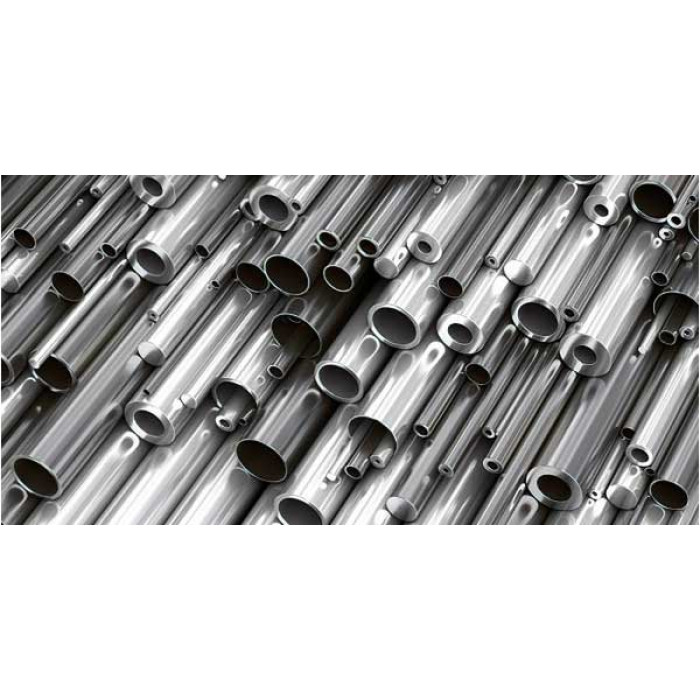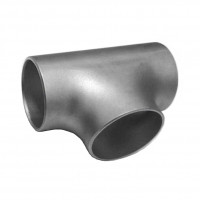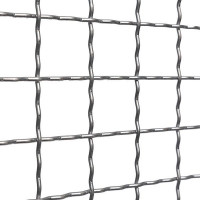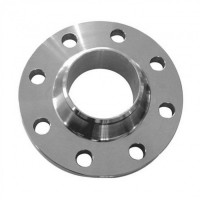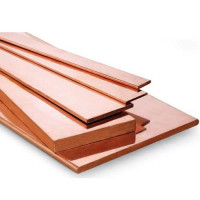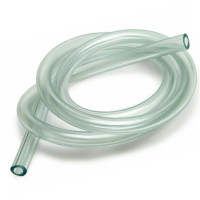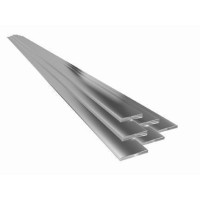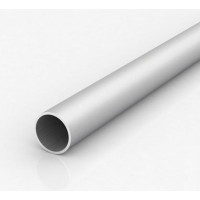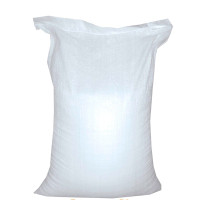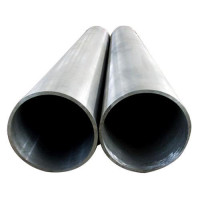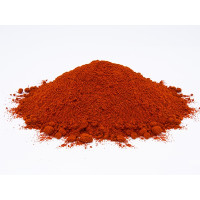Lviv aluminum, stainless steel, titanium, copper, brass, bronze, alloys, steel rolled metal cutting and delivery
Ferrous metal is produced from steel, cast iron, and their alloys. It is used in production where reliability and durability are required. Non-ferrous rolled metal is produced from aluminum, copper, tin, zinc, lead, brass, chromium, magnesium, nickel, etc.; as well as rare and precious metals. CJSC "Metallotorg" sells ferrous metal. Black rolled products are cheaper, but have greater strength and wear resistance than non-ferrous rolled products. Color is used in areas where its specific properties are required: in medicine, aviation, instrumentation, electronics or the space industry.
Ferrous rolled metal is used in the construction of buildings and structures, in mechanical engineering, aircraft construction, energy, and the chemical industry. Black steel is indispensable in instrumentation, carriage, transport and shipbuilding, in the laying of sewers, oil and gas pipelines. It is also used in building decoration, roofing, in the military industry, in the construction of mines, in the production of furniture, metal structures, concrete floors, panels, machine tools and much more. Not without metal rolling and the device of private, suburban facilities.
A person who is faced with rolled metal products, with construction or production, needs to know such terms as assortment and profile. The assortment of rolled metal is a set of rolled profiles that differ in shape and size. Rolled metal profile - the cross-sectional shape of the product.
Steel rolling is carried out in the following ways:
Ingots are used, which are heated and rolled on squeezing machines. All defects are removed from the metal surface, and then it is reheated and rolled.
In special machines, continuous casting is used, and then the metal is rolled, as in the first method.
Rolled products according to the method of rolling and form are distinguished:
sheet metal, or flat (according to the type of product, a rolled metal sheet and rolled steel, steel strip are supplied).
Sheet metal is produced in thin and thick sheets. Sheet steel is divided according to standardized characteristics into categories (from 1 to 5), as well as according to the quality of surface finish into groups (from 1 to 4th surface group). Sheet and coil steel is subdivided according to rolling accuracy and flatness, metal sheet according to the nature of the edge and the ability to draw. They produce corrugated steel sheet (rhombic or lentil) and corrugated board.
high-quality rolled steel (rolled high-quality round, rectangular, square, hexagonal, section steel fittings),
Rolled circle and can be purchased in bars, bays and forgings; rolled section hot-rolled and cold-rolled; circle steel with different surface groups (1 - 3). Steel square is distinguished by the accuracy of rolling. Hexagons are divided according to the method of processing (for forming, machining or for cold drawing), by purpose (depending on steel grades and composition), by chemical composition, by surface quality and metal condition.
Construction fittings are divided, depending on the presence of corrugation, into smooth and corrugated. According to the mechanical properties, reinforcing steel is divided into classes: 1 (smooth), 2-6 (corrugated).
Rolled metal pipes are: welded pipe and seamless pipe; profile and round. Distinguish profile pipe: square pipe (square-rolled), rectangular and bent closed profile. The round steel pipe is divided into electric-welded pipe, steel water-gas pipe and main pipe.
and shaped rolled products (I-beam, channel rolled, corner rolled, rail).
I-beams (an I-beam) come with parallel edges of the shelves (normal, wide-shelf and columned) and with a slope of the inner edge of the shelves (ordinary, special, monorail).
The range of products with exact dimensions and characteristics is a range of rolled products. It has two main product groups:
sheet metal products are cold and hot rolled sheets, strips, rolls;
long products, which can be simple (circle, square, etc.) and shaped (rails, channels, corners, etc.).
Long products also include pipes. However, they are often combined into a separate group, highlighting two subcategories: round and other shapes.
The most popular types of rolled metal
Beams. Shaped products in the form of inclined or horizontal bars. The raw material for the manufacture is low-alloy or carbon steel.
Channels. Profiles with U-shaped section. Shaped metal products, the scope of which is machine and machine tool building, various industries, bridge construction, the construction of load-bearing structures and supports.
Fittings. Long products intended for reinforcing reinforced concrete structures. Manufactured from low alloy and carbon steel. The surface of the bars can be smooth or ribbed.
Steel sheets. Cold or hot rolled metal plates. The thickness varies over a wide range.
Pipes. hollow merolled metal with various cross-sections, the use of which is necessary in the construction of pipelines and oil pipelines, heat and water supply networks, as well as at different stages of construction. Products are cold- and hot-formed, electric-welded, water-and-gas. According to the shape, the assortment is divided into: round, rectangular, oval and square rolled products.
Decking. Thin metal sheets with stiffening ribs, made by cold rolling, past the stages of galvanizing and priming. This type of rolled metal can be wall, roofing, load-bearing.
Rolled metal: areas and applications
In the modern world, there is practically in any field of construction, industry and economic activity. For example, rolled is necessary in the construction of high-rise buildings, industrial complexes, as well as in the production of machine tools, cars, aircraft, individual furniture.
Recently, decorative has become more and more popular. Compositions are made from it, buildings, furniture, and various structures are decorated with it. Products from ferrous and non-ferrous metal are not inferior in demand. They are used as decor not only in private households, but also in offices and parks.
Products are also necessary for fastening rails, preventing soil slippage (there is a special type of rolled metal for this - a shunt), water, heat and gas supply to residential buildings and non-residential buildings. Today, not a single branch of human life can do without them.
Sheet metal: features
Today, its demand has increased in the markets. There are many ways to make it. Mainly produced from alloys and non-ferrous metals. Distinguish depending on the method of production of products. It is divided into hot rolled and cold drawn. The scope of the sheet depends on how it is made. Such products are in demand in construction and industrial production. Steel plates are in the greatest demand. After all, they have a number of advantages:
strength;
long service life;
resistance to temperature extremes, mechanical influences from the outside;
due to the galvanized surface - corrosion resistance.
The product is manufactured by changing the temperature regime. The profile is deformed under the influence of cold or hot temperature. Popular types include the following:
Smooth. Always in demand. The assortment is wide, depending on the wall thickness.
Galvanized. Among the positive characteristics, it is worth highlighting the resistance to corrosion, exposure to high temperatures, ultraviolet radiation. The price of sheets is relatively low, and the service life is significant. They can be subjected to various treatments. Widely used in roofing, mechanical engineering and industry.
Perforated. They have holes of different shapes (round, square, rectangular). It can be used as a decoration for building facades or in construction.
Stainless. Products have many advantages: they are not subject to corrosion, resistant to high temperatures, plastic, durable and attractive in appearance. They are used in almost all spheres of life (railings, spans, commercial equipment).
Decorative. Today they are produced in various shapes (corrugated, mirrored, polished, textured).
Corrugated sheets. This is a special product having a good steel thickness. Used for wall cladding, for the construction of fences from the inside. Aluminum sheets have found wide application in production. In households, they are used to make trays for quail hawks. Due to the smooth surface of the sheets, they are easy to clean with a wide spatula. Aluminum is coated with a special surface to prevent corrosion and rust and increase wear resistance to a humid environment. Perforated sheets are used to create a non-slip surface in factories. In the production of aluminum sheets, they are made of different thicknesses - there is thin-sheet and thick-sheet rolling. Perforated sheets are used in cases where it is necessary to save on the weight of the finished structure.
No questions about this product, be the first and ask your question.

